Matador Network's Blog, page 1052
July 19, 2019
Museum of Underwater Art opening
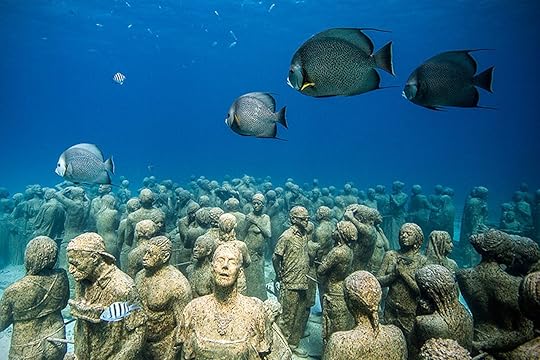
If you’ve been looking for a way to combine your love of open water with art, then look no further. Underwater museums have been popping up all over these days, with some of the most popular ones in places like Mexico and the Bahamas. Now, Australia is joining in on the fun by opening up an underwater museum of its own in its Great Barrier Reef Marine Park.
The purpose of the Museum of Underwater Art (MOUA) is to increase environmental awareness, as well as to take the pressure off natural reefs and allowing them time to repair by diverting attention to the installation sites instead. The proposed sites are Palm Island, Magnetic Island, John Brewer Reef, and the Strand near Townsville, known as Australia’s center for marine science.
As reported by The Guardian, the first artwork will open up on the Strand in December of this year and be exposed to the non-diving public at low tide and underwater at high tide. Named “Ocean Siren,” it’ll be a solar-powered sculpture of an indigenous girl that, using data from the Australian Institute of Marine Science, changes color to alert people of critical temperature rises. Soon to follow “Ocean Siren” will be the Coral Greenhouse, which will be installed just before coral spawning to provide coral larvae with a new surface to attach to.
The idea for the museum was put forth by Jason deCaires Taylor, who created the world’s first underwater sculpture park in Grenada, and aims to steer public conversation to our relationship with the ocean.
“Our oceans are going through rapid change, and there are huge threats, from rising sea temperatures to acidification, and a large amount of pollution entering the system,” said deCaires Taylor. “Part of creating an underwater museum is about changing our value systems — thinking about the sea floor as something sacred, something that we should be protecting and not taking for granted.” 

More like this: The world’s first underwater villa set to open in November in the Maldives
The post Australia’s Great Barrier Reef is getting an underwater art museum appeared first on Matador Network.

The best things to do in Spokane

Spokane, Washington state’s second-largest city, certainly doesn’t get the hype of the larger Pacific Northwest hubs. It doesn’t have the brunch chops of Portland or the startup scene of Seattle. It also only has just over half a million people in the entire metro area and surrounding valley. As the cost of living continues to skyrocket on the other side of the Cascades, the meter is slowly shifting to the east. With the same temperate climate, easy outdoors access, and much more bang for your buck, Spokane is on the brink of becoming the region’s next big spillover city. Even if moving there isn’t in your future, by taking a trip out there soon, you’ll not only beat the simmering trend, but you’ll finally have something that is actually unique to post about on social media.
It’s the big city meeting the Wild West.
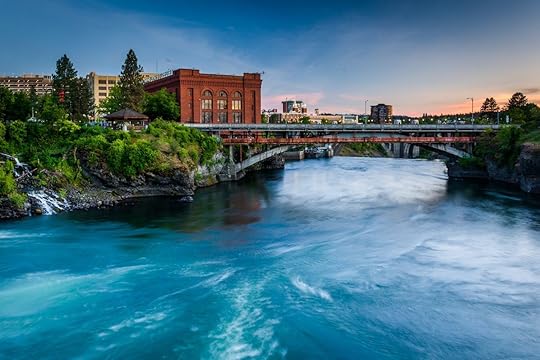
Photo: ESB Professional/Shutterstock
Spokane is estimated to grow by another 20,000 people in the next 20 years, according to US Census Bureau statistics, with many of those new residents expected to come from the more expensive coastal cities. The Spokesman-Review reported that in recent years, more than 2,000 residents of King County (Seattle) alone leave each year in favor of Spokane County. To those coming from larger cities, the most noticeable difference is the lifestyle. Spokane’s way of life is far more relaxed than what you might find on the other side of the state — to the point where you can actually feel the absence of tech bros and $5 coffees. The rush-hour commute is more of a lack thereof than a daily headache, though this is critical because the public transit isn’t nearly what it is in Seattle. General living expenses in Spokane are significantly cheaper compared to cities on the coast, the biggest money-saver being housing.
Average rent is at least half in comparison, coming in at under $1,000 on the apartment rental website Rent Cafe compared to just under $2,000 in Seattle for a similar 800-square-foot apartment, and the average house price is just over $200,000. Looking back since the 2010 census, the Spokane metro area has been steadily increasing in population over the past few years due to job growth. This is partly spurred by the two universities, with the Seattle Times noting that over 8,000 people moved into Spokane County last year alone. Medicine and government are the other top job markets, though an Amazon fulfillment center is under construction and plans to employ over 1,500 people.
Another aspect of Spokane to consider is the legalization of marijuana statewide. Although it may or may not affect you directly, the state (and in turn, many social programs) certainly benefits from it. In 2018, over $120 million in taxes were reported by the Washington State Liquor and Cannabis Board, down from an even more enormous $314 million the year before. These funds are distributed between organizations and funds like the Basic Health Plan Trust account, which provides healthcare to those who need it, and the Department of Social Health Services that apply it toward substance abuse programs. Other uses include community health centers, public and educational programs, and drop-out prevention efforts.
The outdoor access is the city’s top attribute.

Photo: Ric Schafer/Shutterstock
Beyond the mellow lifestyle, Spokane’s most attractive quality is it’s proximity to nature. There’s a people-driven vibe in the outdoors community here that almost seems too quaint for a city of Spokane’s size, and the locals are into it. They’re into not being a resort destination with traffic inching its way up a clogged highway into the hills every Friday evening and Saturday morning. Nearly any recreational activity doable in the PNW — from skiing and snowboarding to fishing, hiking, and camping — is within an hour’s drive. Mt. Spokane Ski and Snowboard Park is the local mountain for making turns. It’s a community-owned nonprofit, which, in addition to being a place where the people who ride there can have a voice in decision making — such as its recently completed addition of the new North Wood lift and additional terrain that opened last season — also keeps lift tickets far below what you’d find further west. The state park that surrounds it and shares its name is flanked with hiking and biking trails, and is a popular camping spot for Spokanians during the summer.
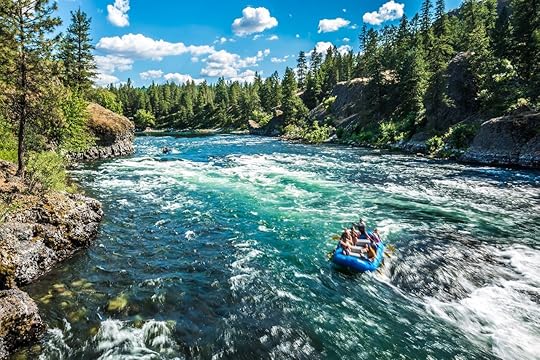
Photo: digidreamgrafix/Shutterstock
On-water activities are a thing here too, despite the coast being five hours away. Rafting or kayaking the Spokane River from Riverside State Park, just outside of town, back toward the city is a rite of passage here. The Class III whitewater float takes about two hours, so it’s not going to fill your whole day but is engaging enough that you actually feel like you got a good river session in. Head downtown to Riverfront Park for a walk along the river or take the SkyRide over Spokane Falls. Another local feature is the 90-acre Manito Park on the South Hill, which includes several manicured gardens, a duck pond, walking and biking paths, and an arboretum.
There’s enough entertainment to rival Seattle.
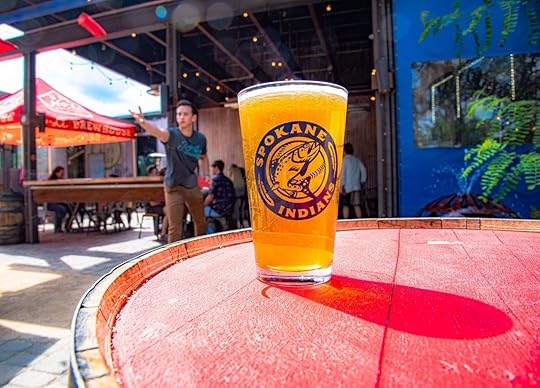
Photo: No-Li Brewhouse/Facebook
This far north and west in the country, Spokane is the biggest city between Seattle and pretty much forever, which can seem isolating — and it is, to an extent — but this fact has worked out well for the local music scene. Spokane has some unique claims to fame. It’s home to the world’s largest 3-on-3 outdoor basketball tournament, Hoopfest, each summer. It also has the Spokane Zombie Crawl on the first Saturday of every October, which is exactly what it sounds like and on par with the long-running equivalents in San Diego and Denver. And then there’s the Skyride Gondola, the closest thing Washington has to the cable car transit systems in South American cities. This gondola takes you from Riverfront Park downtown and gets up close and personal with the Spokane Falls that run through the heart of the city, then moves across the Spokane River and back to the park. It’s a must-do for anyone visiting the city, and while this won’t replace other methods of transit on a daily basis, it’s all good because there’s no traffic anyway. Just be sure to put those snow tires on in November.
The remoteness and the presence of both Gonzaga and Eastern Washington universities have also worked out well for live music. A consistent slew of touring artists stop in Spokane on their way through the PNW. The local scene happens at the Knitting Factory — a sister to the locations in Brooklyn and Boise — and the Fox Theater, which in addition to hosting Ray Lamontagne this fall, is the PNW’s finest tribute to Art Deco. On the beer front, because no one is going to spillover anywhere unless there are at least three smoked IPAs on the other side, Iron Goat Brewing Co. and River City Brewing are popular spots to meet, eat, and sample the tap, and No-Li Brewhouse is a popular downtown spot by the river.
It’s an easy city to get outside of.

Photo: Fans of The Gorge Amphitheatre/Facebook
In a two-hour drive, you can catch a concert at what has been called one of the best venues in the entire country. You’re about as likely to hear one story about the Gorge Amphitheatre for every ten you hear about Colorado’s Red Rocks Amphitheatre, but the setting is, at least in the local opinion, equally idyllic for an outdoor concert. If the outdoor activities aren’t enough to draw people over the hills from Seattle or up from the Rockies, a steady run of jam band shows and camping festivals should do the trick. If you like a little wine with your music, stop into Arbor Crest Wine Cellars. One of the many wineries in the area, it offers live music that overlooks the vineyards every Sunday night throughout the summer and plays to a crowd that primarily consists of young professionals, old professionals, and craft booze enthusiasts. Bring a blanket, some snacks, and your own drinks if wine is not your thing, and sit back and enjoy the music. 

More like this: South Dakota is the most underrated state in America. Here’s why.
The post Why Spokane is the Pacific Northwest’s next big spillover city appeared first on Matador Network.

Stockholm has floating library
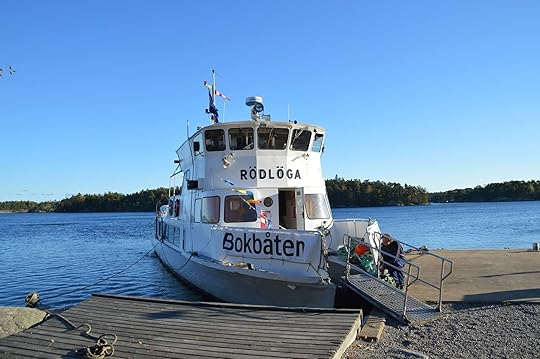
Libraries are the best way to give everyone, no matter their income or background, access to information and entertainment. But that only works for those who live nearby and have access to the infrastructure. For Swedes who live in the remote islands in the Stockholm archipelago, there’s no need to worry about access to knowledge, they have the bokbåten.
The bokbåten, the Stockholm county library boatlcarrying about 3,000 literary works on board, supplies the inhabitants of 23 islands in the Stockholm archipelago with books every spring and fall.
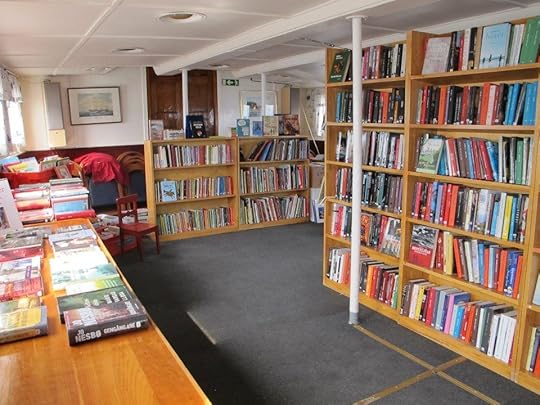
Photo: Bokbåten Stockholms skärgård/Facebook
Of course, there’s a high demand for the latest best-sellers, so inhabitants can order copies in advance.

Photo: Bokbåten Stockholms skärgård/Facebook
According to Literary Hub, which got a tour of the bokbåten, “There are tall wooden shelves, large tables displaying sturdy hardcovers, book carts on wheels, a long checkout table, even event notices taped against the wall. There are picture books for children, popular thrillers, large-print books, texts about history and science and knitting, cookbooks, and audiobooks. Since island residents can order copies in advance, boxes of books are stacked around the boat waiting to be delivered.”
The service, run by volunteers and funded by the Regional Library in Stockholm and the towns it serves, has existed since 1953 and is the oldest library boat in Scandinavia. 

More like this: The 7 coolest libraries around the world
The post This floating library in Sweden is every book lover’s dream appeared first on Matador Network.

The best LGBTQ-friendly spas

No matter sexual orientation or gender identity, everyone likes to be pampered. A long massage or rejuvenating skin treatment will recharge and revitalize you — a necessity in the high-stress, constantly connected world we live in. But as a queer traveler, it’s important to take an extra layer of caution and ensure that you are visiting a safe, tolerant spa. Finding an LGBTQ-welcoming spa can be a difficult task — there are numerous factors to determine if spas deserve this accolade. They can be located in a city prominent for its queer communities, such as New York City; owned by a gay person; part of a verified LGBTQ-friendly hotel brand; or certified by online resources like GayTravel.com. Here are seven spas around the US that are verified queer-friendly with luxurious treatments.
1. Paul Labrecque Spa — New York City

Photo: Paul Labrecque Salon & Spa/Facebook
Located in NYC’s prestigious Upper East Side neighborhood, Paul Labrecque is a standalone spa and salon, owned by the eponymous celebrity hairstylist and his partner (in life and business), Brian Cantor. The couple began their spa business over 30 years ago in a humble 200-square-foot space and have since created a beauty empire, with locations around NYC, Philadelphia, and Palm Beach, along with many high-end corporate partnerships.
The New York-based spa gurus are one of the few certified vendors of Biologique Recherche, the coveted skincare brand that prides itself on a stripped-down approach to beauty. Every facial here starts with a skin analysis by the esthetician to create a treatment based on the customer’s unique needs. Popular treatments include Biologique Recherche PIGM 400 Silk Facial, a dark spot-correcting treatment that uses a mask inspired by textile technology, and a slimming body algae wrap, detoxifying the epidermis through the release of excess water. The spa also offers massages, body treatments, makeup applications, and nail services for all genders. In New York, a city chock-full of spas and cutting-edge beauty treatments, we recommend Paul Labrecque for R&R.
2. Ape + Canary — Rochester, New York
Rochester is home to New York’s second-largest LGBTQ community, and Ape + Canary is the most luxurious spa in the area. Part of the Strathallan hotel, Ape + Canary is located in a traditional Finger Lakes brick building in downtown Rochester. Solo and couples treatments include traditional Chinese Ming Dynasty gua sha and ear reflexology to relax muscles and detoxify the skin, dermaplaning, O2 facials, manicures, pedicures, and the like.
3. Boon Hotel + Spa — Guerneville, California
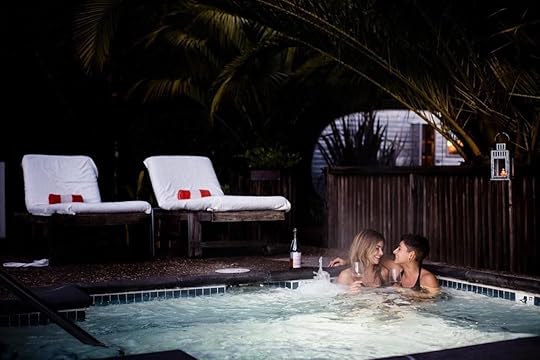
Photo: boon hotel + spa/Facebook
This wine country boutique hotel is situated among the redwoods of Guerneville, a sleepy town in the Russian River Valley. The hotel is owned by Crista Luedtke — also the hotel’s chef, mixologist, creative director, designer, and spa director — a proud lesbian woman who delights in welcoming guests of all orientations. Given the hotel’s proximity to San Francisco — only two hours away — the 14-room hotel is a coveted, sequestered hideaway for the Bay Area’s gay community.
In Sonoma County, a place famously laid-back and always slightly inebriated, the hotel and its spa evoke the area’s easygoing attitude. There are a number of body and skin treatments, including deep tissue massages and facials; you can even escalate the zen with CBD treatment add-ons. A day pass to the spa and pool, for LGBTQ travelers who don’t wish to opt for Boon’s glamping experience, comes with a bottle of locally made bubbly upon arrival.
4. Tamaya Mist — Albuquerque, New Mexico
Few places come close to earning the title “paradise” — the Hyatt Regency Tamaya Resort & Spa is one of them. Situated in Santa Ana Pueblo, between the Sandia Mountains and the Rio Grande, the adobe-built hotel is surrounded by miles of horseback riding (on rescue horses), hiking, biking, three pools, and a golf course. The hotel is GayTravel.com approved, a gold standard for choosing LGBTQ accommodations.
The spa, called Tamaya Mist, draws inspiration for treatments from ancient Native American practices, including the lavender dry brush therapy, which is comprised of dry brushing, a lavender oil massage to release tension, and a hot oil scalp treatment. The prickly pear treatment uses a moisturizer made from indigenous southwestern plants to firm and tone the skin with a salt scrub.
5. Away Spa — Fort Lauderdale, Florida

Photo: W Fort Lauderdale/Facebook
The Away Spa at the W Fort Lauderdale is a new South Florida relaxation center, especially friendly to LGBTQ travelers. The W hotel brand is a longtime supporter of the queer community, and the Away Spa is no exception — the decor is loud and colorful, bold graphics of lipstick-lined lips and high heels adorning the walls. The space includes a Glam Station to quickly get camera-ready; a Quick Fix chair to sort out a look; a Manicure Bar; and five treatment rooms, including a couple’s suite, which is a treat after a day on the packed beaches of Fort Lauderdale. Nearby is the gayborhood of Wilton Manors, with plenty of nightclub options.
6. Shui Spa — Provincetown, Massachusetts
Provincetown — commonly referred to as P-Town — is a veritable gay capital and artist’s colony located on the isolated tip of Cape Cod. The Shui Spa is a unisex space in the midst of this utopia, with a mineral tub, Himalayan Salt Cave, and steam room; treatments include massages, facials using Kiehl’s products, waxes, nail salon, and even energy work — you’ll leave with chakras rebalanced. In party-heavy P-Town, the Shui Spa is a meditative refuge for gay travelers looking to have a few moments of peace before attending a drag show or underground dance party later that evening.
7. Hotel Palomar — Philadelphia, Pennsylvania

Photo: Kimpton Hotel Palomar Philadelphia/Facebook
Kimpton Hotels are famously LGBTQ-friendly, a principal hotel brand to develop outreach programs for the queer community thirty years ago and the first to score 100 percent on the HRC Equality Index. The brand is the Trevor Project’s national hotel partner, donating a generous $5 for every booking. The Palomar in Philadelphia embraces this support, a chic Art Deco property located in Rittenhouse Square, close to the city’s gayborhood. The hotel offers an in-room spa for guests, ideal for LGBTQ guests who don’t feel comfortable going to a public wellness space. Treatments vary from hot stone massages to body wraps to aromatherapy — all in the privacy of your own hotel room. 

More like this: 5 LGBTQ books to celebrate pride all summer long
The post The 7 most luxurious LGBTQ-friendly spas in the US appeared first on Matador Network.

July 18, 2019
Travel by favorite Disney Princess

Disney Princesses have come a long way since the franchise’s debut film, the 1937 Snow White and the Seven Dwarves. Today, Disney princesses range from actual princesses to badass ladies who have mastered archery and adventure across the sea into the unknown. Each princess has her own unique background, lifestyle, and passion, but we’re sure that if they could jump out of the screen, they’d all eagerly strap on a pack to explore the world. So rather than offering up the obvious (“Oh you like Mulan? You should go to China.”), we’ve instead imagined where these princesses would go based on their own interests and personalities. Here’s where we think they would go and where you should head too, according to your favorite Disney Princess.
For fans of Snow White: Uganda

Photo: Disney/GUDKOV ANDREY/Shutterstock
Snow White loves her seven dwarves, but she also loves her animals. You can interact with animals anywhere, but not all of those are ethical experiences that cause no harm or disruption to the animals’ lives. A perfect place to conscientiously view majestic creatures in their natural habitats is Uganda, a landlocked country in Africa. Bwindi National Park is renowned for its gorilla trekking; permits for this can cost a pretty penny, but it’s well worth the expense — your guide will take you closer than you ever thought you’d get to a silverback and his family, and nothing can compare to the sight of seeing them happily living their lives up close and personal.
Trekking through the national park will also provide opportunities to spot hundreds of different birds and butterflies, as well as other primates. Visitors can also go on a safari to see the big five, i.e. elephants, leopards, lions, rhinoceroses, and buffalo. While a safari will likely not get you as close to the animals as gorilla trekking, it’s still a wonderful and worthwhile experience for fans of the first official Disney Princess.
For fans of Cinderella: New York, New York
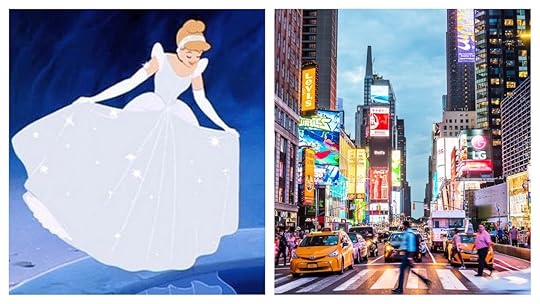
Photo: Disney/Resul Muslu/Shutterstock
Everyone knows Cinderella loves a good party, and she can go from an elegant ball to getting her hands dirty, and vice versa. New York City has a widely varied nightlife, from speakeasies and rooftop bars to dive bars and live music venues, which attracts people from all walks of life. Whatever kind of mood you’re in, whether you want to dress up to the nines and sport glass slippers or just throw on jeans and a t-shirt, there’ll be dozens of places all over NYC that’ll suit your needs. But unlike Cinderella’s first time at a ball, you won’t have to leave at the stroke of midnight lest your carriage turn back into a pumpkin.
For fans of Aurora: Kyoto, Japan

Photo: Disney/f11photo/Shutterstock
Hopeless romantic that she is, Aurora would love Japan, and those who favor the sleeping beauty will too. With hot springs, dramatic scenery, and delicious food, the archipelago is dreamy. Kyoto, where traditional, old-world Japan mixes with modernity, is perfect for a soul like Aurora to wander through. The city gives off an aura of serenity, and you’ll feel nothing but a calm wonder while walking through its streets, drinking at teahouses, or relaxing at onsens. Visiting temples like Fushimi Inari, nature spots like Arashiyama Bamboo Grove, and warmly lantern-lit areas like Gion will enrapture visitors — but any enchantment here will be the good kind, no cursing business going on in this neck of the woods. Save the sleeping for a ryokan, a traditional Japanese inn that’ll provide you with all the solitude and comfort you need after a day of exploration.
For fans of Ariel: Greece
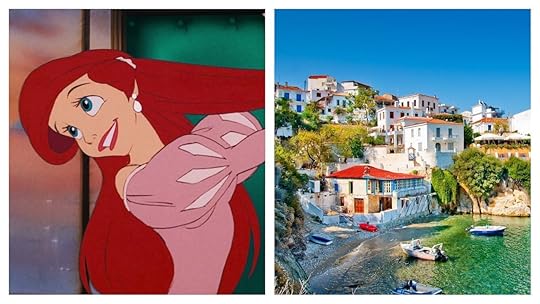
Photo: Disney/imagIN.gr photography/Shutterstock
Ariel is both a creature of the sea and lover of human culture, and Greece is where fans of the little mermaid can tie the two together. Exploring historic sites lends itself as a window into history where you’ll learn about the start of Western civilization, as well as mythology. Greece is also known for its beaches and islands, where you can swim and snorkel in the blue waters with some colorful aquatic creatures. Most famous of these islands are Santorini and Mykonos, but if you want to combine history with swimming, we recommend using Athens as your homebase, where historic sites are within the city and visiting one of the lesser-known, but equally amazing, islands as a day trip is unforgettable.
For fans of Belle: Buenos Aires, Argentina

Photo: Disney/R.M. Nunes/Shutterstock
Always eager to learn, Belle is a bookworm at her core, so she’d feel right at home in a city with approximately 25 bookstores for every 100,000 residents. One of the most beautiful and largest bookstores in Buenos Aires is the magnificent El Ateneo Grand Splendid, which used to be a theater back in the day and has kept most of its original architecture (think ceiling frescoes, red stage curtains, and audience boxes). There’s even an annual book fair that spans 20 days, with thousands of events including readings and workshops. The city is teeming with culture; there’s the Latin American art museum with works by famous artists like Frida Khalo, Teatro Colón for opera performances, and many palaces with stunning architecture.
For fans of Jasmine: India

Photo: Disney/Curioso/Shutterstock
Jasmine wanted to break free of the constructs that restricted her view of the world, so a vast and diverse place like India is perfect for such a person. Since she’s royalty, checking out the various palaces would be in the spirit of the princess; there’s the Mysore Palace in the state of Karnataka and Ujjayanta in Tripura. In Jaipur alone, a newly listed UNESCO World Heritage site known as the Pink City, there are a handful of gorgeous palaces worth visiting, such as the Hawa Majahl and City Palace. Jasmine also longed to mingle with locals and enjoy the anonymity of a crowd. Well, it doesn’t get more crowded than India, which has some of the best street markets in the world. The cities of New Delhi, Mumbai, and Jaipur have some of the most well-known markets in the country, where visitors can easily lose themselves among all the hustle and bustle.
For fans of Pocahontas: Peru

Photo: Disney/Seumas Christie-Johnston/Shutterstock
Pocahontas’ love of the wilderness is intrinsic to who she is, so her fans are going to want to visit a place where they can get in touch with nature. For this, visit Peru. The South American nation has a diverse set of landscapes, including rainforests, jungles, deserts, mountains, and volcanoes, and as a result, it has a rich biodiversity. Free spirits like Pocahontas will have no qualms about trekking through the Amazon Rainforest, the Andes, the Atacama Desert, and even the Inca Trail to Machu Picchu.
For fans of Mulan: Chile

Photo: Disney/kavram/Shutterstock
Mulan has strong physical abilities, so she would love a place where she could put those skills and muscles to good use. Chile, with its ride range of terrain that offers great hiking, is perfect for fans of this independent, no-nonsense princess. There’s the well-known Patagonia region, Cajón del Maipo, San Pedro de Atacama, and all the national parks. The best part is that you don’t even have to be as physically inclined as Mulan; there are several trails that offer just as amazing views at a lesser difficulty. As Mulan is pretty skilled on horseback too, she’d be glad to know Chile offers some of the best horseback riding in South America.
For fans of Tiana: Italy

Photo: Disney/natalia_maroz/Shutterstock
Before becoming a princess, Tiana was a cook in New Orleans who hoped to one day open her own restaurant — a goal she, of course, achieved. So, to put it simply, Tiana is a foodie through and through. There’s good food all over the world, but one country that shines bright in the culinary scene is Italy. Italy does pasta and pizza like no one else, but it’s also the place for a succulent dessert. Each region has its own specialties and preferences, but it’ll be delicious food no matter what, so you can’t go wrong. If you want to dive right in, try one of the country’s many food festivals. Tiana definitely wouldn’t be able to not get in the kitchen, though, and you shouldn’t either. Be sure to sign up for a cooking class to learn from the local masters of Italian cuisine.
For fans of Rapunzel: Australia

Photo: Disney/Michelle Xu/Shutterstock
Rapunzel wondered what life was like outside of the walls behind which she was held, and she dreamed of one day being able to explore the world beyond them. A vast country where you could spend an indefinite amount of time exploring and still not even scratch the surface of all it has to offer, Australia is perfect for those who think like Rapunzel. There’s Uluru, a sacred rock formation in the heart of the Australian Outback; the Great Barrier Reef, the world’s largest coastal reef with over 900 islands and thousands of species of oceanic life; Wave Rock, a natural rock formation in Western Australian that’s shaped like an ocean wave; and Kings Canyon, similar to the Grand Canyon but with a large amount of trees and opportunities to swim in sinkholes.
For fans of Merida: New Zealand

Photo: Disney/Olga Danylenko/Shutterstock
Fans of Merida are going to want to head somewhere they can get into the adventurous spirit. With a beautiful natural landscape that has been the backdrop for many a film and television series, New Zealand has no end to the adrenaline-inducing activities available. It’s the best place in the world to go bungee jumping, with stomach-dropping spots like Kawarau Bridge, a breathtaking,141-foot drop that people can still jump from today. Other death-defying activities include mountain biking, kayaking, whitewater rafting, hiking, skydiving, driving along some of the country’s most dangerous roads, launching yourself as a human catapult, and riding the world’s largest swing. You name it, and it’ll be there, with incredible scenery to inspire that brave and adventurous spirit.
For fans of Elsa: Switzerland

Photo: Disney/ansharphoto/Shutterstock
The cold and snow never bothered Elsa, and Switzerland does not lack either. If you do want that white blanket of snow, head up to the Alps; the Jungfraujoch is a great place to start and is a saddle between the Jungfrau and Mönch mountains. There, you’ll find the Top of Europe building, which has several viewing platforms, and the Sphinx Observatory, one of the highest astronomical observatories in the world. It’s also a great place to hole up and enjoy some solitary me-time, as Elsa needed from time to time.
To switch up the landscape color scheme and socialize a bit more, there’s Lauterbrunnen, one of the country’s prettiest villages, located in a stunning mountain valley. If you’re itching for some urban civilization, visit Zurich, where you can also take a quick side trip to the Lindt and Sprüngli chocolate factories — the best treat for a chilly day.
For fans of Moana: Costa Rica

Photo: Disney/Kristin Sohr/Shutterstock
As someone who loves water sports, adventurous activities, nature, and animals, there’s no better place for Moana fans than Costa Rica, which has all that and more. The Central American country is one of the most biodiverse places in the entire world and has an astounding number of national parks where you can see that for yourself. Corcovado National Park, taking up 164 square miles, is home to over 450 species of birds and 140 mammals, including jaguars, macaws, and capuchin monkeys. Costa Rica’s beaches provide ample opportunity to get out into the water: Dominical for surfing, Tamarindo for diving, Arenal for kiteboarding, Pacuare River for whitewater rafting, and Playa Potrero for sailing, among others. 

More like this: 7 unforgettable first trips for solo female travelers
The post Where to travel according to your favorite Disney Princess appeared first on Matador Network.

Best places to travel this September

If you don’t mind taking the kids out of school, September is the ideal month to travel. The weather is still warm, crowds are thinned, and the shoulder season offers prices half what they were during August. And if you don’t have kids, well good news: You won’t have to deal with droves of kids in all the tourist spots. But when faced with this smorgasbord of travel options, sometimes it’s tough to pick which cheaper, less-crowded destination to visit. With a little help from us, you’ll find your own ideal place to travel this September. Here are our 12 favorites for this year.
Scottsdale, Arizona
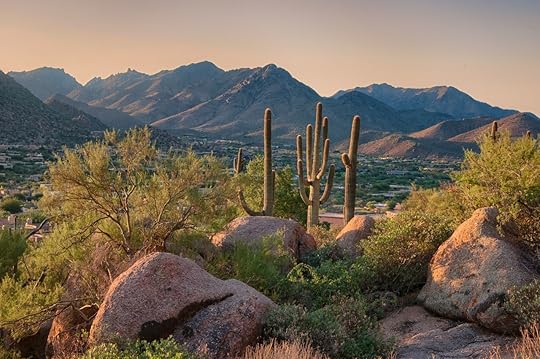
Photo: Phyllis Peterson/Shutterstock
The blistering, shut-down-the-airport heat of summer has begun to subside in Arizona, but the madness (and mad prices) of winter and spring have yet to arrive. In Scottsdale, you can get up and hike through the nation’s largest urban nature preserve at the McDowell Sonoran Preserve before returning to your hotel for a pleasant breakfast by the pool. You can also kayak among red rocks down the Salt River.
Because it’s still the off season, you can get more than half-off rooms at many of the area’s fabled resorts at itsthathot.com. Go early in the month, and the ulta-posh Andaz Scottsdale has rooms for under $200 a night, a venerable steal for your own adobe bungalow. For a chiller, trendy apartment vibe, head to The Scott Resort and Spa, where you can ride out the heat of the day with a surprisingly affordable massage in the air-conditioned spa.
Catalonia, Spain

Photo: Ettenaej/Shutterstock
Early fall should bring pleasant temperatures during harvest season in this wine region about an hour from Barcelona. So you can enjoy that city without summer crowds for a couple days before heading up to the Priorat region and the town of Porrera. Stroll through the provincial streets stopping into tasting rooms before venturing out through rolling hills and visiting Poblet and Escaladei abbeys. If you’d like a curated and active way to traverse the countryside, On Foot Holidays offers an eight-night package, including stays at charming B&Bs, picnic lunches, and six dinners for just under $1,200.
Macao

Photo: Sean Hsu/Shutterstock
The Las Vegas of Asia is a fascinating place beyond its bright lights and lavish hotels, awash in Portuguese architecture and food leftover from the colonial period. Fall is a perfect time to visit this Chinese Autonomous Region, as you’ll get a taste of the region’s culture too during Art Macao, running through October. The festival brings special exhibitions to many of the city’s hotels, as well as public art installations, youth programs, and free musical performances. On Friday and Saturday nights, you can also witness the 30th anniversary of the Macao International Fireworks Display Contest, where organizations compete in the skies over the city to see who can produce the most impressive show.
Samoa

Photo: Danita Delmont/Shutterstock
To truly delve into the culture of Samoa, it is best to visit in September. Not just because the weather is pleasant but because that’s when the Teuila Festival takes over the capital city of Apai from September 1 to 7. Think of the festival as a crash course in Samoan culture, where you’ll witness traditional dancers, fire knife dancers, and a floral parade during the opening ceremonies. The weeklong fete continues with musical performances, traditional tattooing, more dancing, and wood carving and cocktail competitions. So if you’ve ever wanted to visit the South Pacific for anything other than its beaches, this is the time to do it.
Hermanus, South Africa

Photo: Ken C Moore/Shutterstock
September’s best whale-watching destination is this small city down the Western Cape from Cape Town. September is smack in the middle of the southern right whales’ residency here, with over 100 known whales cruising the waters offshore. Most whale-watching trips will have you witnessing all kinds of whale behavior, like breaching, lobtailing, sailing, and spyhopping. From the 27th to 30th, you can come for the Hermanus Whale Festival, where in addition to the usual food, crafts, and live music performances you can also attend educational whale talks and catch the Whales on Wheels car show.
Binghamton, New York

Photo: LUMA Projection Arts Festival/Facebook
Any time that’s not winter is an ideal time to visit the Carousel Capital of the World, home to six of the 170 remaining hand-carved, antique wood merry-go-rounds in the world. But on September 6 and 7, Binghamton gets even trippier when it hosts the LUMA Projection Arts Festival. For those two days, light projections take over the city, blasting light-based art over the city’s structures and turning the town into a giant, lit-up museum. Highlights this year include Onionlab’s Phasing Rain, a walkthrough exhibition that will examine the creative and destructive force of rain. And Maxin10sity’s Pandora’s Box, a trip through Greek mythology at Binghamton City Hall showing the bad that can come from good intentions.
Kansas City, Missouri

Photo: Jeremy Pawlowski/Shutterstock
There is, quite simply, no bigger barbecue party in the world than the one that descends on Kansas City in September. The American Royal World Series of Barbecue celebrates its 40th year from the 12th to the 15th, when over 600 teams converge on the Kansas Speedway to see who is the world’s greatest grillmaster. As any good western celebration does, the World Series also features a pro rodeo, a livestock show, and a good old-fashioned hoedown. For equine enthusiasts, the weekend also includes horse jumping and Arabian horse shows. And even clinics where you can learn how to judge next year.
Kathmandu, Nepal
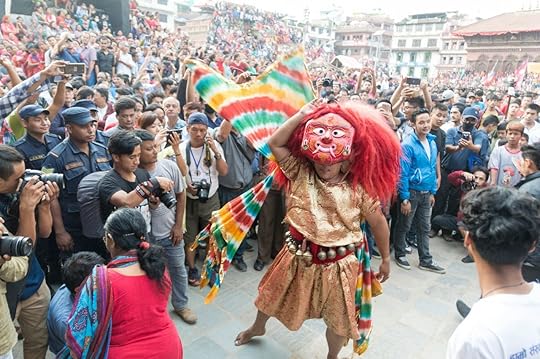
Photo: Iryna Hromotska/Shutterstock
So, maybe climbing Mount Everest, or even visiting base camp, doesn’t seem quite so appealing anymore. All the better reason to explore the vibrant capital city of Nepal instead, where beginning on the 13th you can immerse yourself in Nepalese culture during the Indra Jatra Festival. The party takes over Durbar Square for eight days, where nightly tributes to the god Indra include masked dances, cultural displays, and, of course, plenty of food. If you want to get in on the action then trek into some more-remote villages full of temples and monuments, check out the Remote Lands Kathamndu Culture Trail. The nine-day trip takes you through all of it, including one village that sits 12,000 feet above sea level.
Cusco, Peru
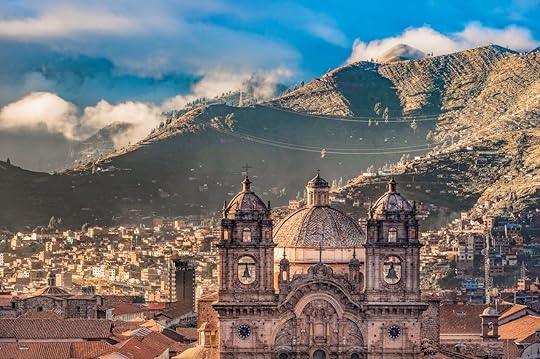
Photo: sharptoyou/Shutterstock
Seriously, you can skip the Rainbow Mountain pictures in the Sacred Valley, as you’ll likely spend half your day waiting for one photo op and be disappointed by the non-photoshopped hue. Instead, spend your time in the city of Cusco, where on September 8 you can take part in the Fiesta de la Virgen de Natividad. The people of Cusco mark this celebration by parading through the streets with a statue of the Virgin Mary, culminating in a massive party full of music, dancing, and traditional food. Cusco is also full of hotels that keep the colonial vibe going, whether it’s the JW Marriott Convento El Convento Cusco — an old convent with daily alpaca visits — or the Inkaterra La Casona, a 16th-century manor house that’s the city’s first boutique hotel.
Connecticut

Photo: CCAP/Facebook
Good times abound statewide in September, when a handful of fall festivals and an unusual adult summer camp bring Connecticut to life. In New Haven, kick off the month by running in one of the biggest half=marathons in the world at the New Haven Road Race. Then immediately negate it during a night in one of America’s best Little Italys. Food also abounds at the Connecticut Folk Festival and Green Expo on the 7th, which you can turn around and burn off during the New Haven Grand Prix cycling race on the 13th.
Over in Kent, Camp John Waters runs from the 13th to the 16th, where the guy who made Hairspray and Pink Flamingos hosts a weekend-long “summer camp.” Events include Hairspray Karaoke, John Waters bedtime stories, costume contests, Bloody Mary bingo, and a full-on film marathon.
Italy

Photo: emperorcosar/Shutterstock
Italy during the summer can be an exercise in overtourism. And while the food is just as good and the scenery just as beautiful with crowds around, it’s still better experienced without them. Head to the boot in September and you’ll be able to move through the Cinque Terre without hundreds of school groups, marvel at the architecture of Rome without being asked to move for a picture, and enjoy thin crust pizza in peace. Intrepid Travel’s Highlights of Italy tour gives you all these experiences plus stops in Venice and Florence for under $1,200, far less than you’d pay in August.
Sacramento, California

Photo: Farm to Fork Capital of America/Facebook
If you can’t quite swing Italy this year but want all that same level of fresh, it-just-tastes-better-here food, head instead to Sacramento. No, we’re serious. The nation’s agricultural capital is within 300 miles of where a large amount of American produce is grown, a fact you’ll learn while eating your way through the annual Farm-to-Fork Festival from the 27th to the 29th. Enjoy the perfect mid-80s daytime temps as you peruse stalls from farmers, restaurants, and Northern California wineries in front of the capitol building. The whole thing culminates with the annual Tower Bridge Dinner, when chefs from the city create a multi-course feast on the city’s iconic bridge. Tickets are nearly impossible to come by, but it’s still a spectacle to behold.
Cape Breton Highlands, Nova Scotia
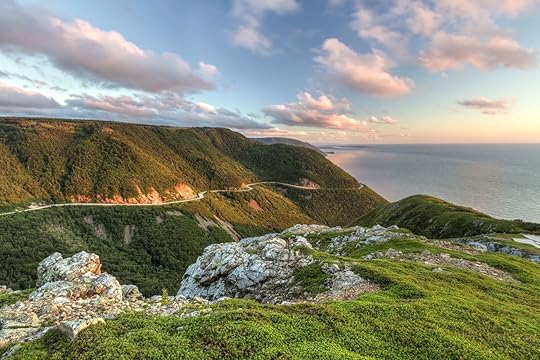
Photo: Colin D. Young/Shutterstock
The majestic Cape Breton Highlands National Park, one of the most scenic wilderness treks you can take in North America, can be a little overwhelming if you try and plan a trip yourself. The Cabot Trail alone is almost 200 miles long, and deciding which river canyon and rust-colored cliffs to go see can be challenging. But during September the park hosts its 15th-annual Hike the Highlands Festival, where it offers loads of guided hikes in and around the park, and rangers spell out the trails to hit with educational info along the way. If you’re feeling sporty, you can also compete with other hikers to see who hikes the longest during the festival. 
This piece was updated on July 18, 2019

More like this: The 25 places you need to travel to in 2019
The post The best places to travel this September appeared first on Matador Network.

Reasons to travel with your kids

Next time your child approaches a significant birthday, or you’re debating whether or not they really need those athletic shoes they claim everyone else already owns, think about what sort of gift would really be meaningful. While a big trip isn’t something you can give for every birthday, few things are more valuable than the rewards that come from travel. Making travel a part of your kid’s life will help them grow into the type of person we should all aspire to be. Here’s why travel is the best gift you can give your child.
Memories last longer than objects.

Photo: Alena Ozerova/Shutterstock
Chances are, no matter what you give your child, it will either break or they will outgrow it eventually. Memories, on the other hand, last forever. Sure, you may get fuzzy on some details, but the fact of having traveled and the experiences gained from that will last a lifetime. In fact, if you have your child keep a diary, they will have those travel memories in greater detail. Plus, a diary lets them reflect on the travel, and it may have a bigger impact.
Travel makes us grow.
Ultimately, we want our children to grow up to be better human beings. We know that travel expands the mind and broadens our horizons. It’s no surprise that travel helps kids do better in school, as a survey of teachers showed kids who travel tend to exhibit more independence, confidence, respect for others, and openness to trying new things.
It’s a gift that you can enjoy together.

Photo: Soloviova Liudmyla/Shutterstock
Your child may be pestering you for a skateboard, and you may find one with the coolest deck design for their birthday. After a brief moment of appreciation, though, they won’t really continue to associate the skateboard with you. A trip taken together, on the other hand, will always be remembered as a gift you shared with them — whether it’s to another country or just the countryside.
You can really celebrate your child.
Your child may appreciate receiving Legos or a friendship bracelet kit, and those things can certainly be personalized — but they don’t necessarily reflect a child’s passions. A trip, on the other hand, can celebrate what the child loves or loves to do.
When our artsy eldest turned 15, her father took her on a four-day trip to Tokyo, where they checked out cool architecture, a DJ competition, and a robot restaurant. When her surfer sister turned 15 two years later, she and I went to Kauai. We woke up before dawn each morning to hit the waves and explored the island for the rest of the day.
You don’t need to give travel for every birthday.

Photo: Claudia K/Shutterstock
Travel is expensive, and giving a travel gift every birthday is not feasible for most people. Special gift trips can be reserved for milestone birthdays or other special events, like graduation. We used mileage tickets for the trips to Tokyo and Kauai, and they were special presents to commemorate our daughters turning 15. The parents of a friend of mine took each of their grandchildren on a trip when they turned 10 while other parents I know celebrate 13 as the year to go on a birthday trip.
You can give the gift of travel any time.
Travel is a great way to bond with your child and create special memories, and that can happen any time. If the opportunity arises, you don’t need to wait around for a milestone or special day. If you have a business trip with some spare time, bring a child along — without siblings, even if they have them — to share a few cool experiences together. My husband took our tech- and music-loving son on a work trip to Seattle. He missed school on Friday, and they stayed for the weekend. They rented a muscle car, checked out the new Amazon Go shop, and spent hours at the Experience Music Project museum.
Send them on trips without you.

Photo: Alonafoto/Shutterstock
Consider sending your kid on a trip without you. If they are at least 10 years old, they could fly to visit grandparents or even friends who live not too far away — as long as those friends are able to wait for your child at the gate, as is required for unaccompanied minors. It may be a little scary for them, and you, but it will build their sense of independence. It will be empowering to learn that they really can venture a little farther afield and spend some time with people who might do things a little differently than they’re done at home.
When they get older, give them longer travel experiences.
If your teen is wondering what to do for the summer, have them look into programs abroad. There isn’t a more transformative experience than being an exchange student with a program like AFS. If all your child can fit into a busy summer is a short-term voluntourism experience, this is still likely to be enlightening.
Travel abroad can be expensive, and some of these exchange programs offer scholarships. If you’ve got a motivated, hard-working kid, have them apply for a government- or foundation-funded program like NSLI-Y to study Chinese, Russian, Korean, Farsi, Indonesian, or Arabic; the Congress-Bundestag Youth Exchange to study in Germany; or CIEE programs to study in a variety of countries.
Note that, very often, the hardest part of longer-term travel is coming home. Your child may come back to think that everyone has changed, when in reality they’re the one who has grown. They will be seeing the world in a new light; with time they’ll come to appreciate things from both their home culture and the one they’ve come to know.
Exchange students bring the rewards of travel to you.

Photo: lassedesignen/Shutterstock
If you can’t afford a longer-term trip for your child, or your child has sports and academic commitments that make a longer trip overseas impossible, consider bringing the travel to your home. Hosting an exchange student will still cost money, but the experience of seeing where you live through another’s eyes will be invaluable.
You can give the gift of travel at home.
You can also get a lot of the benefits of travel in your own backyard. You don’t need to go to Paris to see Degas paintings. If you live in Southern California, the Norton Simon Museum in Pasadena has the second largest collection of Degas works in the world.
You can also explore the food and art of other cultures in plenty of US cities. San Francisco has the Latinx Mission, Chinatown, Japantown, and Little Russia. In the city’s Richmond District, the mix of restaurants and houses of worship is dizzying — from Turkish, Korean, and Burmese eateries to a Serbian Orthodox Church and a Buddhist temple. Most major cities in the US will have similar diverse offerings that can make for an exciting, educational day trip.
Travel will make them travelers.

Photo: NadyaEugene/Shutterstock
This may seem obvious, but not everyone grows up knowing the value of travel and, maybe more importantly, how to get the most out of travel. A child exposed to new foods, cultures, and ways of life will likely seek out more of these experiences as they get older. Travel will make them curious and open-minded — qualities we need more of in today’s world.
Travel can still be wrapped with a bow.
If you still want to have something to put under the tree, or to commemorate a special occasion, you could print out that e-ticket and wrap it. But what we suggest here is to commemorate that trip after you’ve taken it — with a photo book. The book can highlight a trip you took together, or one your child took on their own. If your kid has an iPhone, chances are they’ve been posting photos — hopefully some of them to a shared family album.
Every year I make a calendar for the family with photos from fun events at home and trips we’ve all taken. As this is a tradition now, my husband and kids all share photos with me for it. It’s a year-end reminder of the wonderful experiences each one of us has had — and an inspiration for more in the future. 

More like this: 8 family travel resolutions and how to keep them
The post Travel is the best gift you can give your child appeared first on Matador Network.

History of the Hemingway Daiquiri

The Hemingway Daiquiri should, by the very name of the drink, transport you to 1940s and ‘50s Cuba through Hemingway’s tastes. Yet as I drank one on a sweltering 95 degree afternoon in New York City, the drink couldn’t feel further from the author and the island nation. And the reason why is simple: Earnest Hemingway would never be satisfied with his namesake cocktail.
Today’s Hemingway Daiquiri is made with white rum, maraschino liqueur, grapefruit juice, lime juice, and simple syrup. It’s a delightful drink and a retreat from the real world on a hot summer day. It’s tart without being pucker-inducing, sweet without being saccharine, and boozy without knocking you off your bar stool. It’s also a far cry from the Daiquiris that Hemingway actually drank.
Hemingway’s preferred Daiquiri was much less sweet and had a double dose of rum, Hilary Hemingway, his niece, told NPR. Sometime in the 1930s, Earnest Hemingway walked into a Havana bar called El Floridita to go to the bathroom. He tried a Daiquiri made by renowned bartender Constantino Ribalaigua (some stories say he passed by some Daiquiris prepared for other people and took a sip; others say he ordered one) and remarked that there should be more rum and less sugar. In short, he wanted it simpler and, most importantly, a lot stronger.
Hemingway wasn’t one to mince his words. This is, after all, the same person who wrote that one should “always do sober what you said you’d do drunk” because “that will teach you to keep your mouth shut.”
Ribalaigua whipped one up to Hemingway’s strong (and extremely unbalanced) specifications. He dubbed it the Papa Doble. Papa referred to Hemingway’s nickname on the island, and doble referred to the double shot of rum. Today, tourists flock to the bright pink El Floridita bar more than any other bar to order a Daiquiri. The bar itself lays it on thick, with a golden statue of a Hemingway sitting at the bar for photo ops, and a famous quote from the writer, “Mi mojito en La Bodeguita, mi daiquiri en El Floridita,” hanging on the wall.
Building off a legend
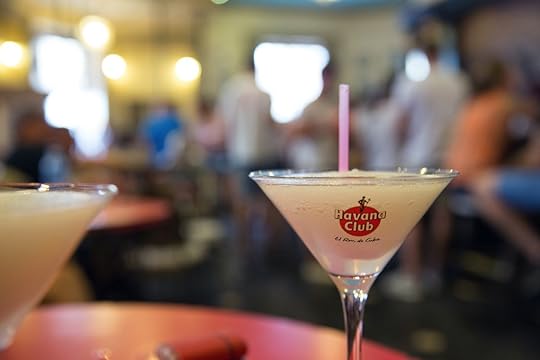
Photo: Luca Querzoli/Shutterstock
Another American had their fingerprints on the Daiquiri long before Hemingway arrived on the island. That original is closer to the Cuban nation than the grapefruit and maraschino version we now know and attribute to Hemingway.
The Daiquiri’s backstory starts with thirsty engineers from the US around the year 1900. Technically, it starts whenever someone had the obvious idea to combine rum, sugar, and lime, but that’s a whole other story, and true cocktail histories are notoriously hard to pin down. During the Spanish American War, US troops (including Teddy Roosevelt and his Rough Riders) landed on a beach called Daiquiri near the town of Santiago. The beach and town became a hub for US activity.
One such activity was mining. Mining companies at the time were exploiting the region for its natural manganese reserves while the US was simultaneously telling Spain to back off because the Americas should be independent from European control as laid out in the Monroe Doctrine. Along with mining came drinking, because entertainment is paramount.
According to Daiquiri legend, a mining engineer named Jennings Cox was throwing a party and needed to make some cocktails. He ran out of gin, so he grabbed some local rum. He mixed up a simple sour cocktail with rum and citrus and sugar and then added ice. Rather than following the cocktail naming convention of the time and calling it a rum sour, Cox named it after nearby Playa Daiquiri, which is midway between Santiago and Guantanamo.
It was a hit. Cox passed his original recipe (which can be seen today at the Merrick Library at the University of Miami) to bartenders in Santiago. Eventually, the US Navy caught on, and naval medical officer Lucius W. Johnson brought the cocktail stateside to the Army and Navy Club in Washington DC in 1909. It was so influential there that the club named a second floor room after it: The Daiquiri Lounge.
Just a decade later is when Hemingway had that fateful bathroom trip. It inspired him so much that in his posthumously published novel Islands in the Stream, there’s a character named Thomas Hudson who downs frozen Daiquiris because when you drink them, they feel like how “downhill glacier skiing feels running through powder and snow.”
However, the first written mention of the Daiquiri, according to the Oxford English Dictionary, was penned by Hemingway’s sometimes friend F. Scott Fitzgerald. He even beat Hemingway to the double. In Fitzgerald’s 1920 novel This Side of Paradise, he writes, “Here’s the old jitney waiter. If you ask me, I want a double Daiquiri.”
From there, it took off in American cocktail lore, and not just with Earnest Hemingway.
The Hemingway legend lives on in name alone.

Photo: Anton_Ivanov/Shutterstock
Constantino Ribalaigua was famous in Cuba long before Hemingway penned his name into history. Ribalaigua was known as el rey de los coteleros, or the “cocktail king.” His dad taught him how to work the bar, and he carried on the family profession, saving up enough money to buy Floridita in 1918 at the age of 30. There, he made a name for himself and for Cuban rum cocktails in general.
Only Ribalaigua and Hemingway know the truth of what went down that fateful day when Hemingway walked into Floridita for the bathroom. Neither are alive to confirm just which variation on the Daiquiri Hemingway had tried and modified — Floridita had numerous on the menu at the time. What we know is that today’s Hemingway Daiquiri is not the rum bomb that Papa ordered. Still, Hemingway and his Daiquiris (and, by extension, Ribalaigua and Floridita) are solidified in cocktail history.
“Everything is lovely here at the Nacional and the only thing lacking is you dear,” Hemingway wrote to his wife Martha Gellhorn in 1943. “If you could only see the view from my room looking out over the beautiful gulf stream and Oh those daiquiris that nobody makes like old Constantino.”
Ribalaigua changed the Daiquiri to give Papa Hemingway what he wanted. But his most lasting legacy borrowed the writer’s name while adding a Ribalaigua twist: grapefruit, maraschino liqueur, and a normal serving of rum.
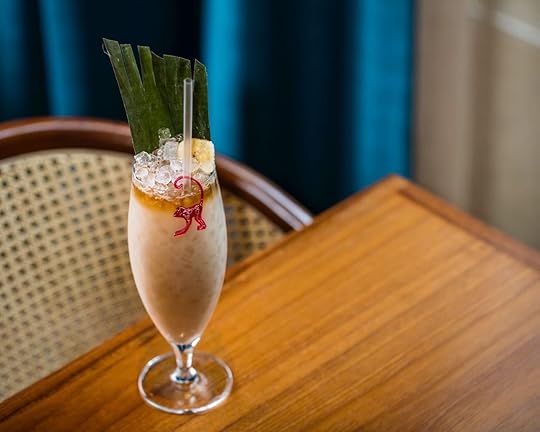
Credit: Eric Medsker for The Polynesian
Just because Papa wouldn’t have approved doesn’t mean you should shun the Hemingway Daiquiri and all its beautiful (and sometimes terrifying) iterations. The frozen Daiquiri, Hemingway’s Papa Doble included, increased the general appreciation for Daiquiris, sealing the drink in the minds of travelers as the ideal symbol of vacationing between the Tropic of Capricorn and the Tropic of Cancer.
Today’s top bartenders have continued the tradition of Ribalaigua and the Floridita by ever expanding what can be done with a Daiquiri. Brian Miller at The Polynesian created a Daiquiri variation called Make YOUR Banana Stand using rum infused with banana and three other types of rum. It’s a far cry from the simple and clean Cuban rum in the traditional, but travel-inspiring nonetheless. The Rum House in New York City has a full list of Daiquiris, including ones that use funky tropical rums and a blue Daiquiri called Real Deep Blue Daq — all served up in a coupe glass for a more refined take than Hemingway’s blended rum double.
My Hemingway Daiquiri did not transport me to Hemingway’s Cuba as I sat in that dark rum bar in New York City on that overbearingly hot day. It did give me a refreshing taste of vacation, though, and I like to think Papa himself would consider that enough. 

More like this: The 8 Piña Coladas you need to try in its hometown: San Juan, Puerto Rico
The post The Hemingway Daiquiri is actually nothing like what Hemingway drank in Cuba appeared first on Matador Network.

Boston tour for sports fans

The term “Masshole” evokes different feelings depending on where you are in the United States. For the rest of the country, it evokes the loud, cocky Bostonian who won’t stop rambling about Tom Brady and probably doesn’t drive as conservatively as you’d like. For Bostonians themselves, however, “Masshole” is a term of endearment. It’s synonymous with the city’s unrivaled passion for its beloved sports teams — a passion that runs far deeper and older than the early 2000s Patriots dynasty.
Even visitors totally unaware of the city’s rampant devotion to its teams are drawn in by the dominant sporting culture. Whether it’s the ubiquitousness of Celtics and Bruins jerseys or the inability of Bostonians to talk about the 2004 Red Sox without bursting into tears, sports permeate every aspect of life in Boston. You haven’t truly experienced Boston until you’ve dived into its sports scene (if you can’t beat em, join em?). Here’s how to take in everything the country’s best sports city has to offer.
The city finally has a winning culture.

Photo: flysnowfly/Shutterstock
Before you can really appreciate why Boston sports fandom is as rampant as it is, you need to understand its origin. In this young millennium, Boston teams have won a total of 12 championships. Some cities wait generations just for one. For some perspective, Cleveland hadn’t won a single championship since 1964 until LeBron James brought the city an NBA championship in 2016. Boston, by contrast, has won nearly one championship per year since 2001 — six in football, four in baseball, and one each in hockey and basketball. Given this pretty staggering run of dominance, the ego inflation is pretty understandable.
Equally important to remember, however, is that this string of success is a recent phenomenon. Before the Red Sox’s legendary 2004 World Series victory, they hadn’t won a championship since 1918 (and were believed to have been cursed for letting Babe Ruth go to the Yankees). Except for the Chicago Cubs, they were the laughing stock of Major League Baseball. The Patriots may be a dynasty right now, but before 2001 they hadn’t won a single championship, and the entire team was almost shipped off to St. Louis in 1992. The Bruins and Celtics experienced similar droughts since the ‘70s and ‘80s.
Boston fans weren’t born with silver spoons in their mouths. They fully understand the heartbreak of losing, and the older ones, at least, don’t take their winning teams for granted. It is this attitude that fuels their fandom.
Understand the tradition.

Photo: Marcio Jose Bastos Silva/Shutterstock
New England is known for its rich history, and its sporting tradition is no different. Each of the four major sports teams is among the first to exist in their respective leagues, meaning Boston’s sports obsession isn’t unique to this generation. Everyone’s parents, grandparents, and even great grandparents grew up rooting for the very same teams. And even more than the teams, which can sometimes feel a bit abstract to fans, their stadiums are considered sacred. Even with all its inconveniently placed poles and uncomfortable seats, Fenway Park is not only a shrine to Boston baseball but also to the sport in general. Built in 1912, it’s the oldest ballpark in the game, and you won’t have to look very hard around Lansdowne Street to find an old, drunk Bostonian eager to tell a Fenway story from his youth.
Go to a game.
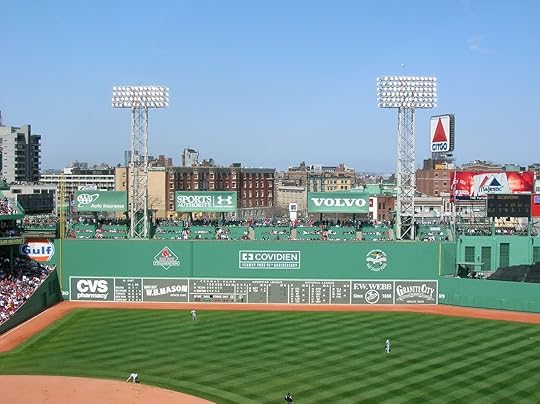
Photo: Christopher Penler/Shutterstock
It goes without saying that the best way to experience Boston sports is to actually attend a game. Going to a game in Boston isn’t like going to a game in other cities, where stadiums are frequently half full, and most fans leave before the game is even over. Here, tickets are often sold out even for relatively meaningless, midseason games. And judging by the crowd’s energy and enthusiasm, you’ll always think it’s a game 7.
Asking a Boston fan which field to visit is like asking someone their favorite kind of pizza — they’re all great, it just depends on your preference. For the most traditional Boston fan experience, you have to visit Fenway Park. Strolling down Jersey Street (formerly Yawkey Way) alongside Fenway is a must. The scalpers, scent of ballpark food, and championship banners from the early 1900s immerse you in the Red Sox experience like nothing else. And then, of course, there’s the old stadium itself. No, it’s not as luxurious as the new Yankee Stadium, and there will almost definitely be a pillar blocking your view, but the park’s classic infrastructure — especially the iconic Green Monster — is part of its charm.

Photo: Joseph Sohm/Shutterstock
For a more modern sporting experience, check out a football game at Gillette Stadium, located a half-hour south of the city in Foxboro. Football in New England is no joke. It’s probably going to be freezing cold, but at least Gillette, built in 2002, is fitted with more modern amenities to help you get through it. Besides, you’ll probably have a pretty thick booze blanket from tailgating. Patriots fans have grown so used to winning that any points deficit is treated like the end of the world, so don’t be surprised if the place suddenly becomes very tense when the Pats fall behind by three points. Don’t worry, though. Every game has a solid chance of a dramatic, fourth-quarter Tom Brady touchdown drive that will make the rest of the country utter a collective, “Are you fucking kidding me?”
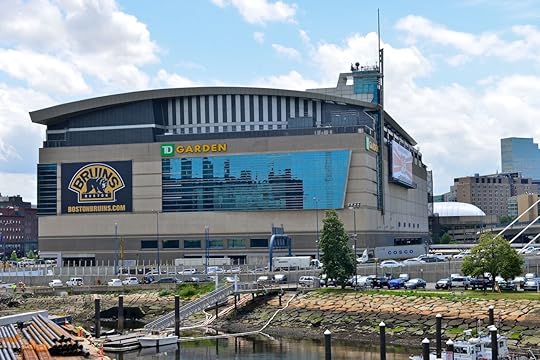
Photo: Richard Cavalleri/Shutterstock
If you’re a basketball or hockey fan, you’re also in luck. The Celtics and Bruins both play in the TD Garden, which is probably the most convenient venue you can imagine. In addition to the stadium, the Garden is home to North Station, one of two primary train stations serving Boston. This means you can easily access both hockey and basketball games by public transport from pretty much anywhere in the city.
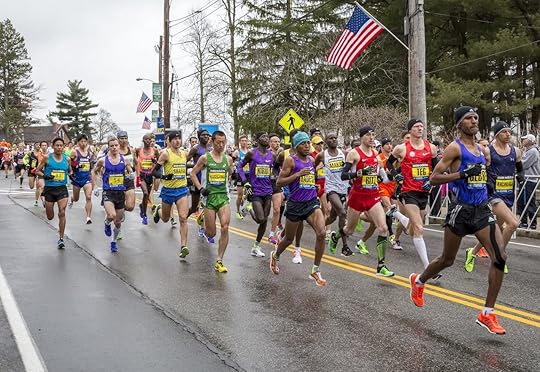
Photo: Marcio Jose Bastos Silva/Shutterstock
And if you happen to be in Boston around the end of April, that might actually be the best time to see some action up close. The Boston Marathon is unlike any other marathon in the country. The world’s oldest annual marathon, thousands of spectators line the streets to cheer the runners while sipping on a cold beverage.
Spend some time in the sports bars.
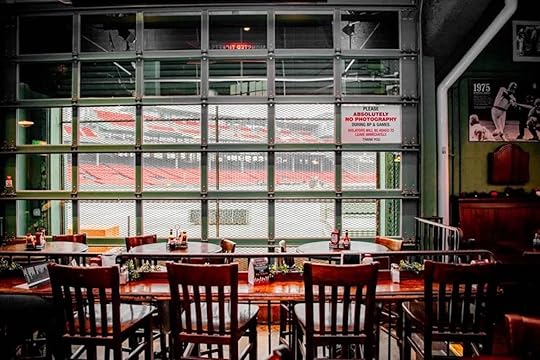
Photo: Bleacher Bar/Facebook
Boston’s status as a thriving sports market isn’t always a positive for fans. Ticket prices can easily equal your monthly rent payment, especially during the playoffs (which, let’s face it, is a frequent occurrence). If you still want an authentic fan experience outside the stadium, visit one of Boston’s unique sports bars. Bleacher Bar almost feels like a cheat code for Red Sox games. Located underneath the bleachers of Fenway Park, you’ll have a view of the field and — even more importantly — much more convenient access to the bar than if you were sitting in the actual bleachers.
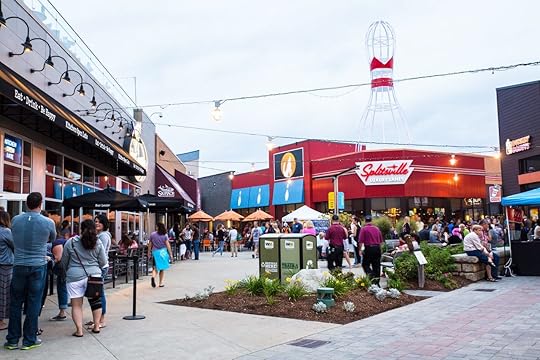
Photo: littlenySTOCK/Shutterstock
If you’re looking to drink in Foxboro while watching the Pats on some big screens, don’t be discouraged because Gillette is outside the city. The stadium is located in Patriot Place, a massive shopping and entertainment complex with dozens of bars and restaurants to choose from. Bar Louie is your best bet for watching the game while Scorpion Bar a few doors down is perfect for those looking for more city-esque nightlife.
While there are no bars inside the TD Garden, there are plenty of options just a block away. The Harp is located a stone’s throw from the Garden, and it’s known to get pretty raucous following Bruins or Celtics games. The Greatest Bar is also a Boston staple. It’s a massive bar with Boston sports memorabilia on every wall and multiple TVs for watching all the games. Just whatever you do, don’t ask to turn on a different game. 

More like this: 9 ways to save money on your trip to Boston
The post Boston is the best sports city in the US. Here’s how to take it in. appeared first on Matador Network.

Traditional Brazilian jambú dishes

Amazonas and Pará, two of Brazil’s northern states, cover extensive territory, including the world’s largest rainforest. With such lush greenery comes diverse ecosystems, dense vegetation, and species largely unheard of outside this region. One of those is jambú, a numbing plant used locally that requires a visit to the north of Brazil to fully experience.
Also known as toothache plant or paracress in English, jambú (scientific name acmella oleracea) is a leafy green plant with a sizeable anesthetic property that comes from the compound spilanthol. It’s often used in remedies for tooth pain (hence the moniker “toothache plant”). Beyond this feature, jambú is praised for being high in Vitamin C, as well as purportedly having aphrodisiac properties. The extract is regularly used in teas and infusions for its anti-inflammatory, antioxidant, anti-asthmatic and diuretic effects.
All of these things aside, it’s also an extremely interesting plant to consume.
Jambú numbs the mouth when ingested, stimulates salivation, and has a cooling effect. These characteristics make recipes with jambú unique both in flavor and sensation. Perception of taste is altered through the experience, and some people have an easier time tolerating spice after eating jambú. The leaves of the plant are most typically used in cooking, though the yellow flowers are also edible. Yet few regions cook or infuse food and drink with the plant outside of northern Brazil.
Jambú grows in hot and humid climates and is a significant part of the Amazonian and Paraense culture. Generally, it’s farmed in small quantities by families; however, in recent years, demand has increased and more commercial farming exists. Some jambú and jambú products can be found in restaurants in cities like Rio de Janeiro, but it’s few and far between.
With a taste similar to watercress, jambú can be used both raw and cooked. Keep an eye out for these local dishes when you find your way to the north of Brazil.
Tacacá

Photo: Paulo Vilela/Shutterstock
Walk around the capital cities of Manaus or Belém late in the afternoon and you are sure to find tacacá vendors on the streets. This flavorful soup is made from tucupi, goma de mandioca, jambú, and shrimp, all local ingredients. Tucupi, the bright yellow sour broth of the soup, is made from juice extracted from mandioca (also called manioc and cassava) pulp which has been fermented and boiled. Proper preparation of mandioca is crucial as it contains cyanide, which is removed through the cooking process. Goma de mandioca, or tapioca starch, sits at the bottom of the soup and looks like a pile of gloop. Dried shrimp are added to the broth, as well as a serving of jambú leaves, providing a tingling and numbing effect. It’s always served in half a hollow gourd, often with a plastic basket beneath it to protect your hands from the heat.
Pato no tucupi
Tucupi is once again used as the base of a local soup. In this version, duck, garlic, jambú, and lemon make up the ingredients of this special dish. The duck is roasted or marinated and pan-fried. Duck broth and the duck meat are then added to tucupi and served with farofa (toasted and grated cassava).
Arroz de jambú

Photo: Sidney Goncalves/Shutterstock
Popular as a side dish in the state of Pará, rice with jambú is the perfect addition to meat, fish, and other main dishes. The jambú leaves are generally pan-fried, chopped, and mixed into rice cooked with onion and garlic. Tucupi can also be used in the preparation of the rice.
Jambú salads
Keeping it simple, jambú leaves can be eaten raw in salads, similar to watercress or spinach. The numbing effect is highest when the leaves are uncooked.
Cachaça de Jambú
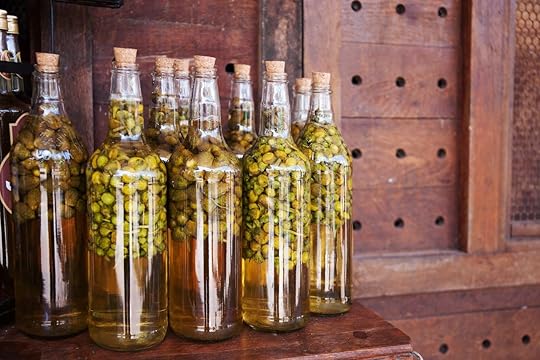
Photo: Dado Photos/Shutterstock
Any talk about Brazilian food and drink must include cachaça, the sugarcane spirit of Brazil. Patented by a bar owner from Belém, Cachaça de Jambú is a must when you are in the north of Brazil.
Cachaça can be infused with either jambú leaves or the more potent flower, making a shot of this spirit both numbing and strong. Lips, tongue, and throat are ignited with a tingling, numbing, mind-spinning sensation at the first sip. For the full experience, take a gulp and swirl the cachaça in your mouth for seven seconds to maximize the characteristic numbing effect. Enthusiasts attest that the second, third, and subsequent shots go down smoother. Kissing someone who has had a shot of Cachaça de Jambú will not go unnoticed!
Purists might tell you that technically this infusion does not meet the criteria to be named cachaça, but this is regularly disregarded. 

More like this: 8 sweet, fruity, and savory Brazilian desserts you need in your life
The post Brazil’s mouth-numbing jambú plant is a taste sensation you’ve never had appeared first on Matador Network.

Matador Network's Blog
- Matador Network's profile
- 6 followers



